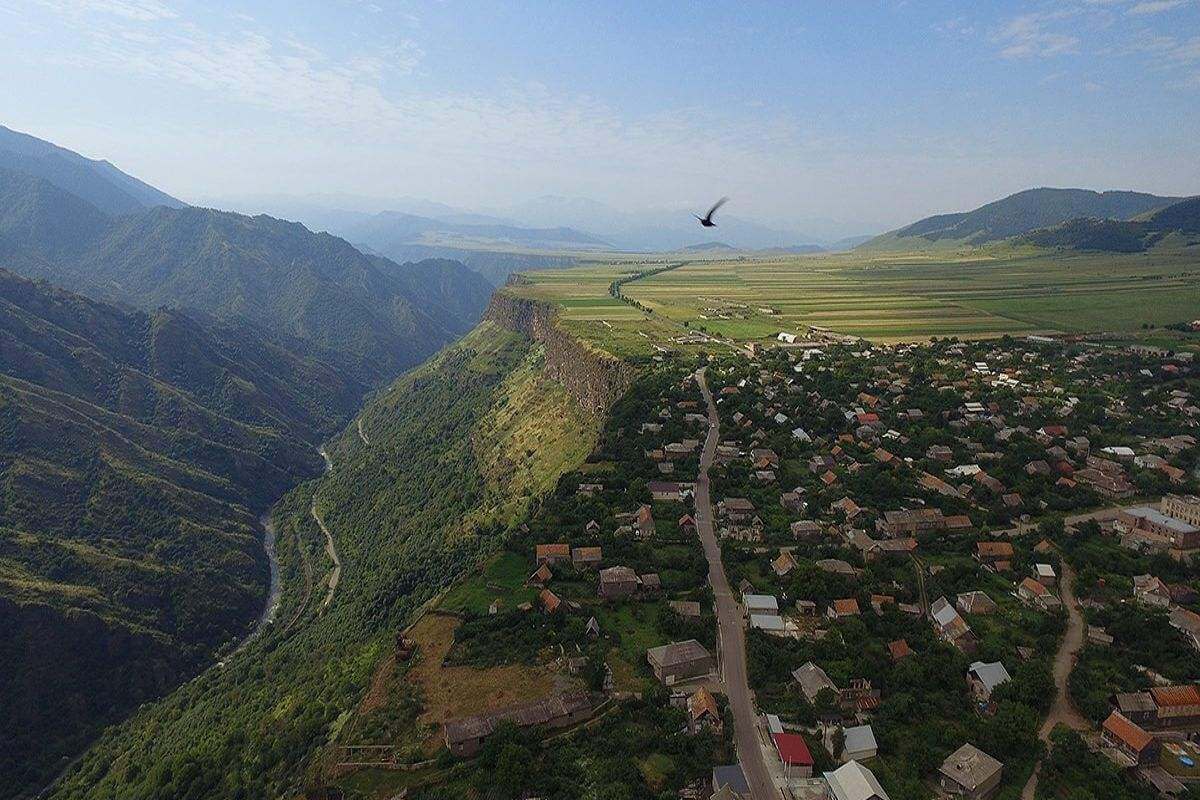HISTORY OF ARMENIA
Armenia is the geographical region where the Armenian people were shaped as a nation and lived over centuries to the present day, thus creating a vast and rich heritage of unique history and culture. Greek historians named Armenia as such about 3,000 years ago. The year 2013 was the 4120th anniversary of Armenian statehood. According to the History of Armenians by Movses Khorenatsi, the legendary archer Haik defeated the army of the Assyrian king Belus and established the first Armenian kingdom in 2107 BC. The Armenian princedoms became united and powerful in 1824 BC thus giving birth to the geographical and political entity of Armenia.
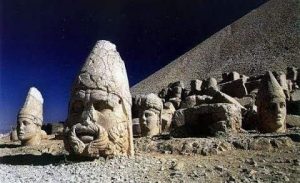
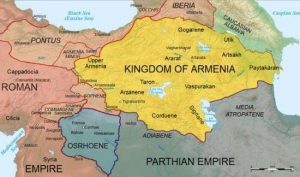
The first signs of Armenia can be traced in Sumerian cuneiform inscriptions dating back to III millennium BC and the Hittites testify to the existence of a country called Hayasa, which is believed to be the cradle of Armenians. According to Assyria-Babylonian cuneiform inscriptions (13-7 cc. BC) Armenia was also called Nairi (country of rivers) which consisted of kingdoms consisting of over 60 tribes. According to the Bible, Armenia was called the Ararat kingdom.
Kingdom of Urartu
Archeological excavations have revealed a unique and highly developed civilization in the kingdom of Urartu (the same as Ararat). Proof of that civilization is the town-fortress of Erebouni founded in 782 BC on the territory of Armenia’s present capital city of Yerevan. The Armenian kingdom again emerged in the region after the fall of the Urartu kingdom. Armenians are descendants of a branch of Indo-Europeans. According to Strabo, a Greek geographer, and historian, the people living in the Armenian Highland spoke one language: Armenian.
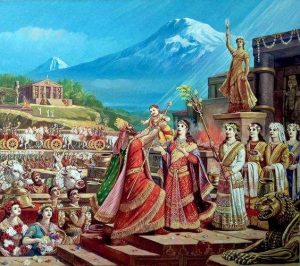
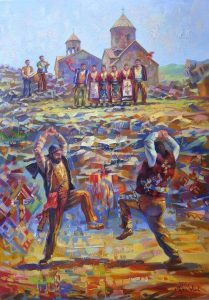
Hellenistic Period
As international trade became more active in the Hellenistic period, Armenia began trading with neighboring and faraway countries and serving as a transit route for those countries. The Hellenic influence was notable also in the social and economical spheres.
Greek became the literary, commercial, and legal medium of communication in the entire region. Many Armenian towns were founded during this period. The country’s ancient capital Artashat (founded in 166 BC) was situated on the main road that bridged the Black Sea ports with India and Central Asia. Plutarch calls Artashat the Armenian Cartagena and mentions that Euripides’s “Bacchae” was performed in Artashat in 53 BC. The first century BC is known as Armenia’s Golden Age with its flourishing towns, art and literature.
Being on the crossroads of East and West, North and South, Armenia has always played the role of a connecting bridge in the region. One of the famous Silk Roads crossed Armenia. This favorable geographic position adversely affected Armenia, making it an apple of discord between competing powers. For this reason, the Armenian people suffered from innumerable tribulations. However, they became stronger in spirit and acquired such traits of national character as bravery and perseverance. They also succeeded through hard work and creative effort in giving birth to magnificent masterpieces of art.
Armenia and the Roman Empire
By all means, the most difficult period for Armenia was the first century AD. The destructive policies of successive Parthian rulers led the country to decline. Beginning from the second half of the first century Rome exerted its influence on Armenia, which threatened the neighboring Parthian state. During this period the Armenian Arshakouni dynasty emerged and ruled until IV c.
After a long struggle against Rome, the Armenian king Trdat I was crowned by Nero in 66 AD and Armenia experienced a revival period. Many fortresses and towns were founded or rebuilt, and a notable advance was made both in art and science. One of the newly emerged cities was Vagharshapat (Echmiadzin) which later became the cradle of Christianity in Armenia. In 301, Armenia adopted Christianity thus becoming the first country in the world to proclaim it as a state religion (note that the Roman Empire legalized Christianity in 313 by the Edict of Milan).
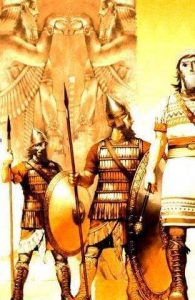
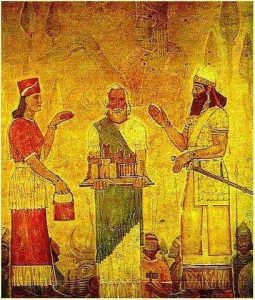
History of Christianity
The history of Christianity in Armenia refers to the time when Noah’s Ark landed on Mt. Ararat. It continued through the times when Christ’s Apostles St. Thaddeus and Bartholomew preached in Armenia around 100 AD and during the era of Illumination with St. Gregory. Grigor Partev (later to be known as Saint Gregory) being of Parthian origin and raised in Caesarea, converted to Christianity to atone for his father’s sins. In attempting to establish Christianity in Armenia, King Trdat, a fervent pagan, tortured and imprisoned Grigor. He spent twelve years in an underground cell at Khor Virap, when the king finally, sick with madness, released him at the request of his sister.
In 301 AD, Grigor, renamed as St. Gregory the Illuminator is said to have cured Trdat of his madness, who in turn converted the country’s religion to Christianity. The Roman Empire did not follow it until 380 AD, making Armenia the first country to adopt Christianity as a state religion. Armenia celebrated the Holy event of the 1700th anniversary of Christianity in Armenia in 2001 AD.
Armenian Alphabet
The invention of the Armenian alphabet in 405 by Mesrop Mashtots is also a landmark in the millennial history of the Armenian people. In 449 there was a rebellion to free the country from foreign rule. This movement divided the country between Byzantine and the Sassanid Persians. In 451, with great heroism and heavy losses, Armenian troops won a victory over a 220,000-strong Persian army in the battle of Avarair.
Later, the Armenians succeeded in further weakening the Persian state through guerilla warfare. In the 7th century, Sassanid Persia collapsed under the invasions of the Arabs. This time Armenia fell under the yoke of the Arab Caliphate. A lengthy national liberation movement ended with the victory of Armenians and in 859 Ashot Bagratouni of the Bagratouni dynasty was recognized Prince of Princes and in 885 he was granted the title of Armenian King by the Caliph.
Cilician Kingdom
From the mid-IX century, the country marked a notable rise in its economic, spiritual, cultural, and political life. The Fortress of Ani, founded in the 5th century, became the nation’s capital in 961 and became known as the town of “thousand and one churches”. However, in XI c. the Armenian kingdom weakened as a result of internal instability and the influence of exterior forces. The Seljuk Turks who had already appeared on the historical scene in the 11th century invaded Northern Armenia in 1064.
While Armenia lost sovereignty, another Armenian kingdom, Cilicia, rose on the southern coasts of the Mediterranean and lasted about 300 years (1080-1375). To explain, Armenians first set foot in Cilicia in 95 BC, and over time they spread on the Mediterranean coast. The Armenian princedom of Cilicia grew so rapidly and became so powerful that in 1198 it was recognized as a sovereign kingdom by Byzantium.
During 300 years of existence, the Cilician kingdom seldom enjoyed peaceful days. Starting from the 20s of the XIV c. the Armenians of Cilicia struggled for their independence against Egyptian Mamelukes and the Sultanate of Iconia. Yet the Cilician kingdom left a rich cultural heritage of architecture, literature, and manuscripts. After the fall of the Tatar Empire, the invasions into Armenia continued. The troops of Lenk Timur (Tamerlane, 1386) and Persian Shah Abbas the Great (1604) invaded Armenia devastating the country. After a long struggle in 1639 Western Armenia succumbed to Turkey and Eastern Armenia to the Persian Empire. As a result, this predicament lasted until the 20s of the XIX century.
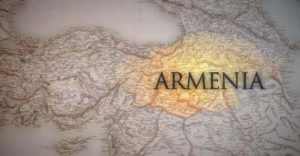
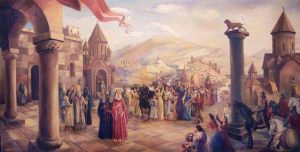
Armenia-Russia relations
Armenian-Russian relations evolved from the XII c. In the mid-XIV century, Armenians began migrating to Crimea. Beginning in the 17th century, Armenia’s relations with Russia helped liberate the country from Turkish and Persian dominance. In 1804 war broke out between Russia and Persia, and in 1813 Russia annexed a number of historically Armenian districts by the Gyulistan accord. In 1828 the Turkmenchay agreement finally united Eastern Armenia and the Western Armenian district of Kars to Russia. This was one of the consequences of the Russian-Turkish war of 1877-1878.
Armenian Genocide
At the end of the XIX century, the Ottoman government of Turkey began a premeditated extermination of its Armenian population which culminated in 1915 in the massacre of more than 1.5 million people. This became known as the first Genocide of the 20th century. Genocide survivors were scattered all over the world and part of them found refuge in Eastern Armenia.
On May 28, 1918, Armenia declared its independence. In 1920 Armenia became the Soviet Socialist Republic. In 1991 Armenia regained independence and has been flourishing as an independent state with a democratic form of government.
GEOGRAPHY
Armenia is in the southwestern part of the Caucasus, south of Georgia, West of Azerbaijan, North of Iran, and East of Turkey. Armenia’s territory is 29,800 sq. km (11,490 sq. miles) comparable with the territory of Belgium. It is a mountainous, landlocked country in Southwestern Asia. Most of Armenia’s territory ranges from 1000 to 2500 meters above sea level. Highest point: Mt. Aragats, 13,419 ft (4,090 m); lowest point: along Debed River, 1,280 ft (390 m). The greatest extent is 360 km. Arable land accounts for 17% of land use; forested 12%; meadows and pastures 30%; arid land 18%, with the balance being mountainous terrain.
CLIMATE IN ARMENIA
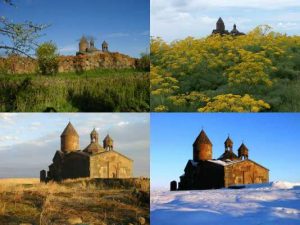 The climate of Armenia is highland continental, dry with four seasons. Temperatures can vary considerably between seasons. The summer is generally pleasant reaching 25°C, though in the Ararat valley temperatures can climb to 40°C. Winters are cold with temperatures dipping to -5°C in Yerevan, and colder in the Ararat Valley (-30°C) and the Lake Arpi area (-46°C). Annual precipitation for the country as a whole averages 550 millimeters. By all means, the best time to visit Armenia is in spring or autumn.
The climate of Armenia is highland continental, dry with four seasons. Temperatures can vary considerably between seasons. The summer is generally pleasant reaching 25°C, though in the Ararat valley temperatures can climb to 40°C. Winters are cold with temperatures dipping to -5°C in Yerevan, and colder in the Ararat Valley (-30°C) and the Lake Arpi area (-46°C). Annual precipitation for the country as a whole averages 550 millimeters. By all means, the best time to visit Armenia is in spring or autumn.
Monthly average temperatures in Armenia (Celsius/Fahrenheit):
| JANUARY | -3.7 / 25 |
| FEBRUARY | -2.3 / 28 |
| MARCH | 4.0 / 39 |
| APRIL | 11.1 / 52 |
| MAY | 15.9 / 61 |
| JUNE | 20.1 / 70 |
| JULY | 24.0 / 75 |
| AUGUST | 24.2 / 76 |
| SEPTEMBER | 20.0 / 68 |
| OCTOBER | 13.9 / 57 |
| NOVEMBER | 6.2 / 43 |
| DECEMBER | -1.2 / 30 |
GOVERNMENT
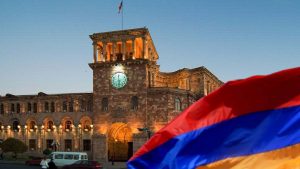

Armenia is a Parliamentary Republican state. The president is elected in national elections to serve a five-year term. Executive power is exercised through a cabinet made up of the prime minister and other ministers. The current PM is Mr. Nikol Pashinyan who was elected in 2018. According to the constitution, legislative power is exercised through the National Assembly, a 131-member body elected to serve a four-year term. Armenia is divided into 11 regions (marz), with Yerevan considered as one independent region. The president is responsible for guaranteeing the independence of the judicial system, which is made up of three levels of general competence courts – primary courts, review courts, and the Court of Appeal. The Constitutional Court decides whether the decisions of the National Assembly, President, and Government are constitutional.
POPULATION

The population of Armenia is about 3.216 million. The capital Yerevan is home to 1.250 million people. The density is 325/sq. miles (126/sq. km), 68% of the population is urban and consists of the following ethnic groups: Armenian 95%, Russian 2%, and others (Kurdish, Yesdi, Jewish, Assyrian, Greeks, Ouds, Gypsy). Life expectancy is 75 for females and 68 for males. Overall, the literacy rate is 98%. Armenians are among Europe’s oldest and most distinct ethnic groups, having inhabited the area east and south of the Black Sea since the seventh century BC. Both the Armenian alphabet and the Armenian Church date back to the fourth century and remain substantially unchanged today.
WORK PERMITS, HEALTH REGULATIONS, LOCAL TIME
No work permit is required for foreign nationals to take up employment in the country. Besides, no mandatory immunizations are required for travelers visiting Armenia. Armenia is four hours ahead of Greenwich Mean Time (GMT + 4).
RELIGION

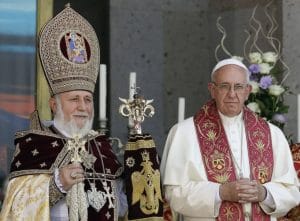
The majority of Armenians are adherents of Christianity, 93% of whom belong to the Armenian Apostolic Church. Minority Christian denominations in Armenia include Russian Orthodox, Armenian and Latin rite Catholics, Protestants, Greek Orthodox, and Jewish. There is a small community of Muslims. In 2001 Armenia celebrated the 1700th anniversary of the adoption of Christianity as a state religion. Freedom of conscience is guaranteed by the constitution and, in general, Armenians are very tolerant of people of other faiths.
LANGUAGE

Eastern Armenian is the official language of the country and 96% of the population considers it to be their native language. It is distinct within the Indo-European family of languages and has its own unique script re-created in the fifth century AD by Mesrop Mashtots. Ancient Armenian is thought to have originated from Sanskrit and Zend. English poet Byron was one of the few Westerners to master the Armenian language and compile an English-Armenian dictionary. In general, Russian predominates as the second language, although, as a consequence of Armenia’s integration into the world economy, the use of English, French, and German is on the rise. Western Armenian is also spoken. To sum up, Russian and English are the most widely spoken languages following Armenian.
CURRENCY

The national currency is Dram (ISO code – AMD, 1 US$ = 483 AMD, December 2017). Currency exchange offices can be found at hotels, banks, and other places in Yerevan and cities. The Dram is divided into 100 Luma. Notes are issued in denominations of 10, 20, 50, 100, 200, 500, 1.000, 5.000, 20.000, 50.000 and 100.000 drams. Luma is not currently in circulation. The US dollar and Euro as well as other currencies can be exchanged freely at local banks and licensed money exchange offices. In fact, the recent legislation limits the advertising of prices in foreign currencies but only in Armenian Drams.
Another key point is that there are no exchange controls on either local or foreign currency and currency may be freely remitted. Physical cash in excess of the equivalent of US$10,000 requires a document that attests to it having been obtained by legal means. On the positive side, remittances are not restricted. Traveler’s checks may be obtained and cashed in a number of local banks. The credit card market is developing widely in Yerevan. Visa, MasterCard, and Maestro are widely accepted as a form of payment.
ACCESS TO ARMENIA
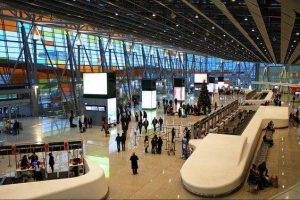
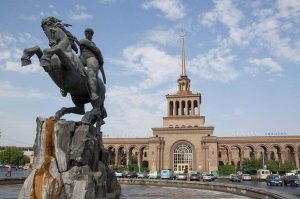
Air access to Armenia is through the country’s two international airports at Zvartnots, 15 KM outside of Yerevan, and Shirak in Gyumri. The recently opened new terminal in Yerevan meets all European and International standards. Moreover, various national and foreign carriers operate flights to Yerevan and Gyumri including Aeroflot, Air France, Austrian Airlines, Qatar Airways, LOT, Armenia Air, etc. Yerevan has direct air connections with Beirut, Dubai, Istanbul, Kyiv, Rome, Moscow, Paris, Prague, St. Petersburg, Tehran, Vienna, etc.
Overland road routes connect Armenia with each of its neighbors; however, those through Azerbaijan and Turkey remain closed owing to the ongoing blockade of Armenia by these countries. Two routes remain open through Georgia providing access to the Black Sea ports of Batumi and Poti, as well as one route through Iran to the Persian Gulf. The road network is relatively well developed with over 98% of interstate roads paved. However, rail links through Turkey and Azerbaijan are closed. Routes through Georgia and Iran remain open.
LOCAL TRANSPORT
Yerevan has a well-developed public transit system with subway, buses, and minivans operating. Most people in the capital use public transit. Taxis and private cars are available and can be booked through a hotel. The average cost of a taxi from the airport outside the capital to the center of the city is about US$ 10. Several companies are providing “rent-a-car” services without chauffeurs (Hertz, Avis, Europcar, SIXT, etc.).
CUSTOMS
Import. Free import of 400 cigarettes; 2 liters or 1 bottle of alcohol (regardless of how many liters contained); 5 kg perfume or an amount valued up to USD 300; personal goods valued up to USD 300 (for residents and non-residents). The Customs Declaration filled out on arrival must be retained by the passenger. Military arms and ammunition, narcotics, pornographic materials, fruits, and vegetables without proper documents are prohibited.
Live animals must be accompanied by a veterinarian health certificate. Export. Free export of 2,000 cigarettes; and 20 liters of alcohol. The Customs Declaration filled out on arrival must be presented. Military arms and ammunition, narcotics, pornographic materials, fruits, and vegetables without proper documents are prohibited. In addition, pieces of art older than 50 years should be accompanied by a document from the Ministry of Culture authorizing export.
COMMUNICATIONS
The International telephone code for the country is 374 followed by the area code (10 for Yerevan). The postal system is run by Hai Post, a state-owned enterprise. Service is rather regular and reliable. Private courier services, including American Express, DHL, TNT, and Federal Express operate in most major cities. Internet service is available widely at hotels and numerous Internet cafes around Yerevan and other cities.
BUSINESS HOURS AND ETIQUETTE
Office hours are generally from 9:00 AM until 6:00 PM, Monday through Friday. Government offices close at 5:00 PM. Banks operate slightly shorter hours opening at 9:30 AM and closing at 4:30 – 5 PM. Retail shops operate seven days a week and are generally open from 9:00 AM until 7:00 PM, with a few shops open 24 hours a day.
Armenians are well known for their generous and hospitable nature. Socializing over dinner with associates is quite common for most business dealing and lengthy toasts are a common feature. Business cards are presented upon first contact. On the other hand, owing to the state of telecommunications in the country, replies may take what might be considered an unusually long time and should be factored into any negotiation.
ARMENIAN WINES, BRANDY, BEER AND MINERAL WATERS

Winemaking is part of the Armenian culture. Armenian brandy and various wines are of the highest quality. The generous sun of the Ararat Valley, the fertile land, and good quality water give the Armenian brandy its gold color and extraordinary taste. For this reason, Winston Churchill, the ex-prime minister of the United Kingdom, preferred the Armenian brandy “Dvin” to other alcoholic drinks.
The most popular Armenian beers are Kotayk and Kilikia. During your visit to Armenia, you will have a unique chance to taste the famous Armenian wines, beer, and brandy. In addition, Armenia is also famous for its mineral waters. The mineral waters of Jermouk, Bjni, Sevan, Lori, Dilijan, Hankavan, Arzni, etc. are known to be tasty and healthy dinner drinks.
ARMENIAN DIASPORA
Armenians are spread out over the world (mainly due to Genocide of 1915 in Turkey, political and economic reasons, etc.). The main communities include:
Russia (2.200.000 Armenians)
USA (1.200.000)
France (450.000)
Georgia (350.000)
Ukraine (150.000)
Poland (120.000)
Turkey (80.000)
Iran (80.000)
Lebanon (80.000)
Argentina (70.000)
Syria (70.000)
Uzbekistan (70.000)
Canada (65.000)
Bulgaria (50.000)
Greece (45.000)
Australia (40.000)
Brazil (30.000)
Germany (30.000)
Belarus (30.000)
Kazakhstan (25.000)
Turkmenistan (20.000)
UK (16.000)
Israel (16.000)
Uruguay (15.000)
Hungary (15.000)
Iraq (10.000)
Netherlands (7.000)
Belgium (7.000)
Egypt (6.000)
Sweden (6.000)
Kuwait (5.000)
Spain (5.000)
Austria (4.000)
Denmark (3.000)
Italy (3.000), etc.
NATIONAL HOLIDAYS AND MEMORY DAYS
1, 2 January – New Year (non-working days)
6 January – Armenian Christmas (non-working day)
28 January – Day of Armenian Army (non-working day)
7 April – Motherhood and Beauty Day
24 April – 1915 Genocide Memorial Day
9 May – Victory and Peace Day (non-working day)
28 May – Republic Day (non-working day)
5 July – Constitution Day (non-working day)
21 September – Independence Day (non-working day)
7 December – 1988 Earthquake Memorial Day
31 December – New Year’s Eve (non-working day)
ARMENIAN NATIONAL CUISINE
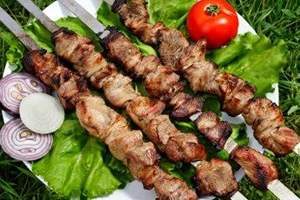
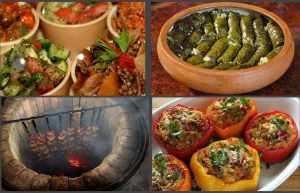
We are proud of Armenia’s brilliant sunshine, perfumed air, glowing rainbows, graceful traditions, and warm smiles. But what really makes us beautiful is our delicious national cuisine. The culinary renaissance now is taking place throughout Armenia, where the food reflects a healthy combination of the ancient and the modern. In fact, Armenian cuisine is far more sophisticated than it used to be. Creative young chefs are adding new chapters to traditional cooking. The best way to explore the various flavors and combinations of the region’s cooking is to begin with its history.
So let’s start… The origin of Armenian cuisine dates back to pagan times. Obviously, it was one of the most ancient agricultural centers. Moreover, the archaeologists found much evidence which allows us to think this way. It is known that in the epoch of Urartu (in 782 BC) the wine-making culture in Armenia had a high quality and had reached a large scale. There were special storehouses named maran for harvested grapes for wine production. The wine was pressed in a huge wooden vat. A very interesting component of old Armenian cuisine is a kind of bread that is called lavash.


From old times it was being prepared in a special cylinder made of clay buried in the ground and called tonir. During our trips to the oldest regions, you’ll have a unique opportunity to get acquainted with this bread-baking ceremony. For example, one of the old characteristics of our national dishes is their spiciness. Pepper, garlic, chaman, and different spicy verdure are largely used. This is caused by certain conditions of the Armenian climate and mountain flora that give a specific flavor to our cuisine.
Armenia – a Tamada’s country
Armenia is also known as Tamada’s country. No Armenian feast is complete without tamadas – toast makers with a rich speech full of philosophy and wisdom. Real Armenian character and traditions are truly expressed in toasts.
Armenia is home to some of the finest recipes of meals you’ll ever find. For example, the peculiarity of Armenian barbecue is in the preparatory marinating. The marinated meat is put on skewers – shampours and roasted over hot coals with no flame. Eating the other national meal – khash is a real ceremony for Armenians, It starts early in the morning and what is really interesting, those present make no toasts while eating khash.
Here is a list of some dishes:
- Armenian BBQ
- Tolma (vegetable, grape leaves and lentils)
- Piti
- Spas soup
- Ghapama
- Ghavourma
- Harisa
- Lahmaju
- Tabule and houmous salads
- Iskhan
- Siga and other fish dishes
- Bastourma and soujoukh sausages
- Lavash
- Khashlama
- Shavourma
- Kjufta and so on.
The staff of the finest restaurants in the city and region is waiting to satisfy your appetite and interest in this area. In general, no visit to Armenia is complete without tasting a real Armenian meal called Ghapama (Armenian Pumpkin Stew).

The main ingredients are boiled rice, raisins, apples, honey, and ground cinnamon. All these are mixed and at the end placed inside a pumpkin. One cannot stand back from Ghapama’s final result where the appearance is as impressive as the views…
Armenian Wines
And don’t forget to mention about a dozen Armenian wines, brandy, and vodka made of mulberry and cornel; finally, fruits full of spices and the smell of sun. Many exotic delicacies are prepared out of grape juice. One of them is Sharots (sujukh). First, a savoring dark cherry-colored syrup is cooked which is called doshab. Later a thick floury jelly is made with a variety of spices. Then a picturesque ceremony follows. Pieces of walnut threaded on a string are dipped in the jelly. Subsequently, the strings are hung to dry. Villagers preserve these strings for winter.
We offer meals in the best restaurants and cafes at each exotic destination. Continental breakfast, lunch, and dinner, which are usually a combination of traditional European and local national dishes, will be also available.
Due to the different restaurants like Italian, Chinese, French, Syrian, Lebanese, Indian, Mexican, Russian, etc. in Yerevan, you can feel yourself in each part of the world. Well, if you are one of those people who love to discover culinary adventures, Armenia is just the right place! So, pull up a chair and get ready for a great meal. Bon appetite!
ARMENIAN RUGS AND CARPETS

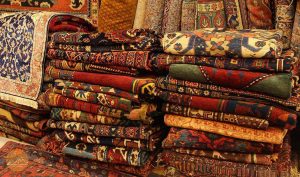
“I, Gohar, full of sin and weak in the soul, with my newly trained hands, wove this rug in 1149. Whosoever reads this say a word of mercy to God for me”. This is a woven inscription from one of Armenia’s most famous and historic rugs called The Gohar Carpet. The history of rug making in Armenia is as rich and complex as the woven designs on the rugs themselves.
Travelers have long admired the artistry and quality of the craft. While traveling through Cappadocia the famous Italian explorer Marco Polo commentated that “The Armenians and Greeks in the three major towns of Konya (lkonio), Kaiseri (Caesarea) and Sivas (Sebastia) made the most beautiful and finest rugs”. Carpet fragments have been discovered in burial sites and dwellings of the Highlands dating from the end of the 2nd and the beginning of the 1st millennium BC.
“Dragon Rug”
While no complete rugs from this period have survived stone carvings and historical documents clearly indicate the importance of this art form during that period. In fact, Armenian rug-making achieved its top glory during the 15th and 17th centuries when skill and craftsmanship reached unprecedented levels in the southern and eastern provinces of Armenia. The vishapagorg or “dragon-rug” from this period includes the swastika symbolizing water and snake. These intricate geometric designs contain both beauty and symbolism and you still can find them in many contemporary designs along with the traditional color combinations of vibrant reds and rich blues.
Historians believe the unique shades of red achieved in these medieval carpets were the result of a dye made from a colorful worm (cochineal) found only in the soil of Armenia. In contrast to years of neglect due to political and economic obstacles, the rug business in Armenia is experiencing a renaissance, thanks to the Megerian family of New York.
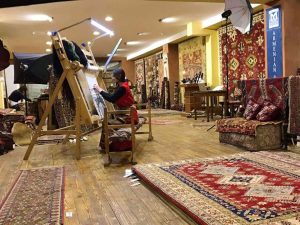
The Megerians in Armenia
The Megerians came out with an initiative to rebuild the industrial infrastructure necessary for Armenia to produce top-quality rugs once again. The family emigrated to the U.S. from Armenia and established a successful international rug company bearing the family name. Their skill at repairing the antique rugs handed down from generations earned them a reputation for fine restorations.
Their New York showroom is an essential stop for the most influential interior designers. They expanded their operations to Armenia in 2001. As native Armenians, the Megerians wanted to help restore their country’s broken economy through job creation in the rug industry. Consequently, they acquired Armen Carpet, a leading rug manufacturing firm, and began refurbishing and updating the factories that drastically needed repair.
On the whole today the Megerians own 22 factories employing 2000 weavers throughout Armenia that produce handmade Armenian rugs. Armen Carpet is an example of a business that maintains traditional standards and practices while incorporating contemporary tastes and ideas. Master craftsmen still use individual and characteristic touches to create stunning patterns.
While many patterns echo ancient traditions, today’s interiors incorporate more modern motifs with bolder shapes and more monochromatic palettes. Hand-woven rugs of Armenia bear the name or initials of the weavers, giving each work of art a connection to its Armenian original roots. In general, the Armenian people have played an important role in the creation, development, and perfection of rug making. In particular, the Armenian artists and skilled masters under the Megerian Family’s expertise are the bearers of the centuries-old traditions of Armenian rug making.
ARMENIAN MUSIC

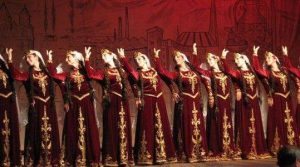
Armenian music has gone a long way from musical folklore to the different genres of contemporary music. We can find the first steps of Ancient Armenian music in the Armenian theatres. Actor groups with many musical instruments, dances, and songs were participating in many feasts. In the 4th century after the adoption of Christianity Armenian sacred music became very popular.
In the earlier Middle Ages Armenian folklore music was also very popular. The songs described the life of common people, their customs, and lifestyle. They called medieval folk singers ashughs and gusans. The most famous of them was Sayat-Nova who lived and created in the 18th century. In the 12th century, Armenians were using khazes (musical signs). Our contemporary Karo Chalikyan deciphered khazes, which helped us to listen again to the medieval Armenian famous music mainly the songs of Grigor Narekatsi, who was the greatest Armenian musician and writer of the Middle Ages.
In the 19th century, the most famous Armenian ashug was Jivan. He wrote more than 800 songs, 550 of which were printed. His songs were the mirror of the Armenian society of his time and chronicler of the difficulties of peasant life. The founder of Armenian opera music was Tigran Chukajyan with his “Arshak The Second” opera.
The main place in Armenian folk music of the 19th century belongs to Komitas. In addition, he gathered more than 3,000 folk songs and purged them from foreign elements. The founder of Armenian symphonic music was Alexander Spendiaryan (1871-1928), whose work was continued by Aram Khachaturyan.
Music in the 20th Century
Aram Khachaturyan was one of the greatest composers of the 20th century. His music has imbibed the tremendous resources of ethnic Armenian music translating them into far-reaching musical pieces which have had powerful effects on foreign nations. Khachaturyan’s world-famous ballets are “Spartacus” and “Gayane”. His creations became the symbols of high art and significant contributions to the world of music. His contemporaries Arno Babajanyan, Edward Mirzoyan, and Edgar Hovanisyan were also very popular in the 20th century. During the Soviet period, the Armenian Republic’s music life had a light up. The best orchestras were the State Choir of Armenia, the Komitas Quartet, the “Tagharan” ancient music orchestra, and the Armenian Folk Song and Dance Ensemble.
Generally speaking, our famous compatriots have done great work for our music life. Even in the hardest winter months of 1991-1993, Loris Tchgnavoryan continued his work with the symphony orchestra of the National Philharmonic. Ohan Duryan is one of our famous conductors and great patriots. Modern Armenian music is very different. Many popular and famous young singers participate in musical contests and win a lot of prizes. One of the modern and well-known composers is Aram Terteryan.
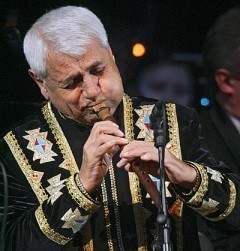
The greatest representative of Armenian folk music is Jivan Gasparyan. Moreover, his uncommon music is very popular not only in our republic but in foreign countries, too. Jazz music has been around in Armenia in recent years, which promoted the formation of many jazz bands, so you can enjoy their music during the tours. LEVON TRAVEL is also organizing choral music performances out in sightseeing destinations. A small choir is performing medieval sacred music or folk songs.
You can see more information about our tour packages here.


